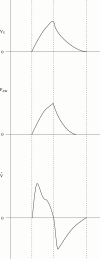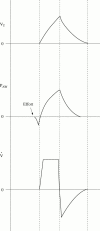Randomised trial of volume controlled versus time cycled, pressure limited ventilation in preterm infants with respiratory distress syndrome
- PMID: 9462190
- PMCID: PMC1720717
- DOI: 10.1136/fn.77.3.f202
Randomised trial of volume controlled versus time cycled, pressure limited ventilation in preterm infants with respiratory distress syndrome
Abstract
Fifty preterm infants weighing 1200 g or more with clinical and radiographic evidence of respiratory distress syndrome, requiring both mechanical ventilation and exogenous surfactant replacement, were randomly allocated to receive either volume controlled ventilation or time cycled, pressure limited ventilation. Tidal volume delivery in each group was deliberately controlled at 5-8 ml/kg so that the only difference between the two groups was the ventilatory modality, the manner in which tidal volume was delivered. The rest of the ventilatory management and clinical care was done according to protocol. The two modes of ventilation were compared by determining the time required to achieve pre-determined success criteria, based on either the alveolar-arterial oxygen gradient or the mean airway pressure as a standard against which the speed of weaning could be objectively assessed. Infants randomised to volume controlled ventilation met success criteria sooner and had a shorter duration of mechanical ventilation. These babies also had a significantly lower incidence of intraventricular haemorrhages and abnormal periventricular echodensities on ultrasound scans. Volume controlled ventilation seems to be both safe and effective in this group of patients.
Figures

 ) for time cycled, pressure limited ventilation. Note contour of the flow waveform, which peaks rapidly and then promptly decelerates.
) for time cycled, pressure limited ventilation. Note contour of the flow waveform, which peaks rapidly and then promptly decelerates.
Comment in
-
Volume controlled and time cycled pressure limited ventilation.Arch Dis Child Fetal Neonatal Ed. 1998 Jul;79(1):F79. doi: 10.1136/fn.79.1.f79. Arch Dis Child Fetal Neonatal Ed. 1998. PMID: 9797634 Free PMC article. No abstract available.
References
Publication types
MeSH terms
LinkOut - more resources
Full Text Sources
Miscellaneous
